A Full Description of ω-Limit Sets of Cournot Maps Having Non-Empty Interior and Some Economic Applications
Abstract
1. Introduction
- 1.
- A finite set (periodic orbit).
- 2.
- An infinite nowhere dense set.
- 3.
- L is a finite union , where are non-degenerate periodic rectangles of F such that is not a rectangle and for .
2. Auxiliary Results
- 1.
- 2.
- for
- 3.
- for
- 1.
- f is bitransitive.
- 2.
- f is topologically mixing.
- 1.
- .
- 2.
- 3.
- .
- 4.
- .
- 1.
- 2.
- For all either and or and
- 3.
- 4.
- 5.
- For , for
3. Description of the Non-Empty Interior Case
- 1.
- ;
- 2.
- there exists a permutation σ of elements such that and for each and .
3.1. A and B Mixing
- (or equivalently , Lemma 3). Therefore, and , and there exists a bijective correspondence between the intervals of A and B and, hence, . If the distribution is trivial, we only have a unique rectangle . For we reason as follows. Assuming an ordering such that , thenfor some . In particular, if then since , although it is also possible to find examples for which . Observe that under the previous assumptions, according to (4) the condition determines the images of all intervals and for . In fact, and for any . Thus, two different distributions (except equivalences) are possible:
- (D1)
- If , there are rectangles and there exists an arrangement of the indexes such that for . It is clear that for any . See Figure 5.
- (D2)
- If , there are rectangles and and , where . Also, it is held that and for , see Figure 6.
Observe that if the number of rectangles k is odd, then only Distribution D1 is possible. - . We defineNotice that and . Moreover, and . In this case, the number of rectangles, k, is always even, in particular as and for The -limit set L is given by , with , , , , such that . The number of rectangles of is and the number of rectangles of is . Observe also that , hence and , , , with , for each R in and , for each in . Thus, for , and for As we have signaled above, the rectangles of the -limit set are described by and for . This case is easily detected when there exists such that . Additionally, if:
- (D3)
- . There are connected components, since the number of connected components of is . See Figure 7.
- (D4)
- . The number of connected components depends on the number of connected components of and which is less than or equal to p and q, respectively, see Lemma 4. Consequently, rectangles can be disjoint, have a common vertex or two common vertices, see Figure 8, Figure 9, Figure 10 and Figure 11. Notice that the case for two common vertices can only be realized by a unique distribution, given precisely by Figure 10; moreover, observe that if and only if and .
3.2. A Mixing and B No Mixing
- If is odd, r odd, then , for all and , , due to the fact that B is not mixing; then both rectangles and belong to (realize that ), that is, belongs to ; similarly, both rectangles and belong to and, therefore, the distribution of is reduced to the case A and B mixing with (distribution D3).
- If is even, m even, now each rectangle of the -limit L is the half part of a rectangle or , and the number of rectangles of is equal to ℓ, , so (notice that, as a consequence of the parity of ℓ, and consider that for ).
- (D5)
- . In this case, the -limit is a set L which is the union of and both with the same number of rectangles. We also have that has an even number of rectangles for . Observe that: and for each entire rectangle R having the form and each projection of a rectangle of must have a common point with the projection of another rectangle; similarly, and for each entire rectangle (having the form ) and each projection of a rectangle must have a common point with the projection of another rectangle. See Figure 12.
- (D6)
- and . By Lemma 4 and Remark 2, we know that each connected component of has the form , where for some values . Notice that , , ; moreover, the number of rectangles in is just . Here, the ‘entire’ rectangles R in have the form , and we have and For rectangles in , having type , instead we find and See Figure 13.
3.3. A and B No Mixing
- Case . Firstly, we claim that the number of rectangles in the orbit of , , is equal to . To see it, let we know that a (b) is a periodic point of () of period p (q). We assert that is a periodic point of F of period . Let m be the order of for the map F. Since on the one hand we have . Thus, ; on the other hand, we also deduce that and , and consequently . From the above reasoning, either or . If it were , with ℓ even, , then and , in contradiction with the definition of the lowest common multiple. If it were , with ℓ odd, , now would give us so , that is, , contrary to our hypothesis. Therefore, is F-periodic and its period is . As a consequence, has different rectangles (maybe with common vertexes). Since , and ℓ is the first time s in which we have that has either ℓ or elements. But the case ℓ is forbidden because then due to the fact that are the ‘middle points’ of and its respective images. This ends the claim.The last claim does not imply necessarily that the number k of rectangles in the -limit must be . It will depend on the parity of and . Realize that and cannot be even simultaneously, at least some of them are odd.If is odd and is even (the case even and odd is analogous), then , and really we have different rectangles in L because the parts and gives rise to the union of . The distribution that appears is equal to the case mixing–no mixing previously considered, distribution D5.If and are both odd integers, then and , and in this case we find different rectangles (notice that for ); moreover, the rectangles in the -limit L are distributed in two groups of rectangles, namely and , with . The distribution of mimics the distribution of , shifting the position of the axes. See Figure 14.Thus, let us assume and are odd numbers. Then, structures that are made up of two rectangles with a common point appear, which allows us to consider different orientations, namely, and see Figure 15.For this case, there must coexist these types of structures with both orientations, but, how many of them?In order to describe and count the structures with negative orientation, we proceed as follows. Recall that we assume , , and both and are no mixing. We put with Moreover, , and , are odd integers. If the -limit set L is written as , take into account that we are going to describe the structures with negative orientation in , for subrectangles contained in bigger rectangles of type and that we start to iterate with the subrectangle .For define as the value for whichNotice that .Similarly, for , define to be value holdingFrom the mixing property of , we have . In short,We can extend the definition to two sequencesin this manner: from the mixing properties of and , we know, for instance, that where we use the notation to denote the valuetherefore, we can define for . Similarly, and we can define for . Thus,Notice that . Similarly, we extend asHere, .Notice that and the same time This implies that because and are odd integers, and we can observe that from this point the values of the orbit of belong to the same structure.Notice also that if thenwhenever As we see, this again guarantees that our extensions, are well defined.Additionally, in order to check if the structure has positive or negative orientation, it suffices, according to (5), to analyze the pairs , with . To this regard, defineIf for some , we say that has positive orientation; if, on the contrary, , for , we say that the structure has negative orientation.Consequently, if we try to count the positive and negative orientations, we only need to see the character of the pairsFor instance, if and , withwe obtain:and from this point we will obtain the opposite orbit to the last iterates. In this case, the number of negative orientations is 5.Once we have described how to count the orientations in , for the set that has subrectangles of type , with , we proceed in a similar way to that described for . Since we have assumed that and , we write , for suitable . Now, we have to define , as the value in for which , and, similarly, will be characterized by , for Notice that and . By extending and to all positive integers, for counting the negative orientations we will have to pick the pairs with , for .
- Case . This means that , in fact and . Firstly, let us show that the point , given by is F-periodic and its (minimal) period m can be ℓ or . Indeed, it is clear that because a and b are fixed points of and , respectively, as a consequence of the no mixing property satisfied by A and B, and the fact that . On the other hand, if were the order of , then would imply that , a contradiction. Therefore, m is either ℓ or .Consequently, we must distinguish two cases according to whether the order m of the aforementioned F-periodic is ℓ or :
- (i.O)
- If , we affirm that the number k of rectangles in is , and in fact is composed of ℓ rectangles of type . To prove it, recall that we are assuming that . Notice that , so for some . If , then we would have , but at the same time, for the decomposition of A and B obtained for their no mixing property, , it is impossible. If , now and since also , we would obtain for all , a new contradiction (at least, ). Therefore, , which implies that either or . For instance, if , then , and thus all the rectangle is included in . From here, and taking into account that an entire rectangle only contains at most a unique point of , we deduce that , and is composed of rectangles of type . Even more, its distribution follows the pattern of Distribution D1, and with equivalence we can reorder the intervals in such a way that and for . See Figure 16.Finally, notice that only the case ℓ odd is permitted here, since if ℓ is even, we would have and then , , impossible (realize that a and b are ℓ-periodic points of and , respectively).
- (ii.E)
- If , we assert that and, to be more precise, is composed of rectangles having type for some , such that each of them are included in , with a common vertex given by a point of the orbit of . To prove it, first notice that , so from Lemma 5 and Theorem 3-(2) we deduce that for any there exist , , such that , . This implies that the F-orbit of is included in entire rectangles of type On the other hand, , and for because for and, according to the distribution provided for Theorem 3 to the orbit of , each entire rectangle only contains at most a unique point of All the above details allow us to conclude that and each rectangle containing a point of is divided into two different subintervals with disjoint interiors and a point in as common vertex, see Figure 17, and therefore we obtain a structure of the type described in Figure 15.Observe that if the position of the intervals is shifted, for example if , for any i, then the orientation of every structure in the column i changes. This case is the same as that obtained in Distribution D2, but changing the entire rectangle by two subrectangles of the type given in Figure 15.
3.4. The Converse Result for the Non-Empty Interior Case
with if
4. Applications to Economic Models
4.1. Puu’s Duopoly
4.2. Kopel’s Duopoly
4.3. Matsumoto-Nonaka’s Model
4.4. Cournot Duopoly When the Competitors Operate under Capacity Constraints
4.5. A Recurrent Class of Two-Dimensional Endomorphisms
5. Some Advances in the Empty-Interior Case
- (1)
- is connected, where is meant the canonical projection to the j-th coordinate, .
- (2)
- .
- (i)
- If , then , and by force with . Applying the maps , we find , and By Lemma 4, A is mixing, so is topologically mixing, . Then, by Theorem 2 there exists such that:
- (i.1)
- either for some (in fact, here is not mixing for , but we can decompose it as and each is mixing, ): in this case, since has non-empty interior and we can use Lemma 3, it can be noticed that the we obtain Distribution D6, which contradicts our hypothesis on the intersection of and ;
- (i.2)
- or if is mixing; in this case, reasoning as above, we arrive at Distribution D4, see Figure 10, a connected set with non-empty interior.
- (ii)
- Let . Notice that if , also has non-empty interior, as a consequence of Proposition 1 and the fact that in a Cartesian product the connected components of a set are the product of connected components of each space, see [31]. Here, additionally, we can distinguish two different cases depending on the nature of .
- (ii.1)
- If is an interval with , we obtain: either Distribution D1, with , if is mixing, therefore a connected -limit set holding and ; or the Distribution that we have found in case A, B no mixing, two rectangles tied by the vertex obtained with the ‘middle’ points (fixed points) of and .
- (ii.2)
- If is an interval with , , according to Lemma 4 both and are mixing. Reasoning as in Case (i.2), we can find such that and , and it is immediate to see that will be the union of two rectangles tied by a common vertex, a connected set.
6. Conclusions
Author Contributions
Funding
Institutional Review Board Statement
Informed Consent Statement
Conflicts of Interest
References
- Block, L.S.; Coppel, W.A. Dynamics in One Dimension; Lecture Note in Mathematics 1513; Springer: Berlin, Germany, 1992. [Google Scholar]
- Kolyada, S.F.; Snoha, L. Some aspects of topological transitivity—A survey. Grazer Math. Ber. 1997, 334, 3–35. [Google Scholar]
- Agronsky, S.J.; Bruckner, A.M.; Ceder, J.G.; Pearson, T.L. The structure of ω-limit sets for continuous functions. Real Anal. Exch. 1989, 15, 483–510. [Google Scholar] [CrossRef]
- Bruckner, A.M.; Smítal, J. The structure of ω-limit sets for continuous maps of the interval. Math. Bohem. 1992, 117, 42–47. [Google Scholar] [CrossRef]
- Agronsky, S.; Ceder, J. Each Peano subspace of Ek is an ω-limit set. Real Anal. Exch. 1991, 17, 371–378. [Google Scholar] [CrossRef]
- Agronsky, S.; Ceder, J. What sets can be ω-limit sets in En? Real Anal. Exch. 1991, 17, 97–109. [Google Scholar] [CrossRef]
- Ceder, J. Some results and problems about ω-limit sets. Real Anal. Exch. 1990, 16, 39–40. [Google Scholar] [CrossRef]
- Jiménez López, V.; Smítal, J. ω-limit sets for triangular mappings. Fund. Math. 2001, 167, 1–15. [Google Scholar] [CrossRef][Green Version]
- Kolyada, S.F.; Snoha, L. On ω-limit sets of triangular maps. Real Anal. Exch. 1992, 18, 115–130. [Google Scholar] [CrossRef]
- Balibrea, F.; Cánovas, J.S.; Linero, A. ω-limit sets of antitriangular maps. Topol. Appl. 2004, 137, 13–19. [Google Scholar] [CrossRef][Green Version]
- Puu, T. Nonlinear Economic Dynamics, 4th ed.; Springer: Berlin, Germany, 1997. [Google Scholar]
- Cánovas, J.S.; Linero, A. Topological dynamic classification of duopoly games. Chaos Solitons Fractals 2001, 12, 1259–1266. [Google Scholar] [CrossRef]
- Dana, R.A.; Montrucchio, L. Dynamic complexity in duopoly games. J. Econom. Theory 1986, 40, 40–56. [Google Scholar] [CrossRef]
- Kopel, M. Simple and Complex Adjustment Dynamics in Cournot Duopoly Models. Chaos Solitons Fractals 1996, 7, 2031–2048. [Google Scholar] [CrossRef]
- Pražák, P.; Kovárník, J. Nonlinear phenomena in Cournot duopoly model. Systems 2018, 6, 30. [Google Scholar] [CrossRef]
- Puu, T. Chaos in Duopoly Pricing. Chaos Solitons Fractals 1991, 1, 573–581. [Google Scholar] [CrossRef]
- Rand, D. Exotic phenomena in games and duopoly models. J. Math. Econ. 1978, 5, 173–184. [Google Scholar] [CrossRef]
- Balibrea, F.; Cánovas, J.S.; Linero, A. Minimal sets of antitriangular maps. Internat J. Bifur. Chaos Appl. Sci. Engrg. 2003, 13, 1733–1741. [Google Scholar] [CrossRef]
- Day, R.H. Irregular growth cycles. Am. Econ. Rev. 1982, 72, 406–414. [Google Scholar]
- Friedman, J. Oligopoly theory. In Handbook of Mathematical Economics. Volume 2; Arrow, K.J., Intriligator, M.D., Eds.; North Holland Publishing Co.: Amsterdam, The Netherlands, 1982; pp. 491–534. [Google Scholar]
- Friedman, J. Duopoly. In Game Theory; Eatwell, J., Milgate, M., Newman, P., Eds.; Palgrave Macmillan: London, UK, 1989; pp. 133–138. [Google Scholar]
- Cournot, A.A. Researches into the Mathematical Principle of the Theory of Wealth; Macmillan: New York, NY, USA, 1838. [Google Scholar]
- Puu, T. Chaos in business cycles. Chaos Solitons Fractals 1991, 1, 457–473. [Google Scholar] [CrossRef]
- Cánovas, J.S.; Muñoz-Guillermo, M. On the complexity of economic dynamics: An approach through topological entropy. Chaos Solitons Fractals 2017, 103, 163–176. [Google Scholar] [CrossRef]
- Cánovas, J.S.; Muñoz-Guillermo, M. On the dynamics of Kopel’s Cournot duopoly model. Appl. Math. Comput. 2018, 330, 292–306. [Google Scholar] [CrossRef]
- Matsumoto, A.; Nonaka, N. Statistical dynamics in a chaotic Cournot model with complementary goods. J. Econ. Behav. Organ. 2006, 61, 769–783. [Google Scholar] [CrossRef]
- Cánovas, J.S.; Muñoz-Guillermo, M. Describing the Dynamics and Complexity of Matsumoto-Nonaka’s Duopoly Model. Abstr. Appl. Anal. 2013, 2013, 18. [Google Scholar] [CrossRef]
- Puu, T.; Norin, A. Cournot duopoly when the competitors operate under capacity constraints. Chaos Solitons Fractals 2003, 18, 577–592. [Google Scholar] [CrossRef]
- Lupini, R.; Lenci, S.; Gardini, L. Bifurcations and multistability in a class of two-dimensional endomorphisms. Nonlinear Anal. 1997, 28, 61–85. [Google Scholar] [CrossRef]
- Sharkovsky, A.N.; Kolyada, S.F.; Sivak, A.G.; Fedorenko, V.V. Dynamics of One-Dimensional Maps; Kluwer Academic Publishers: Dordrecht, The Netherlands, 1997. [Google Scholar]
- Engelking, R. General Topology; Heldermand: Berlin, Germany, 1989. [Google Scholar]
- Burns, A.F.; Mitchell, W.C. Measuring Business Cycles; NBER: Cambridge, MA, USA, 1946. [Google Scholar]
- Linero Bas, A.; Soler López, G. A note on the dynamics of cyclically permuted direct product maps. Topol. Appl. 2016, 203, 147–158. [Google Scholar] [CrossRef]
- Linero Bas, A.; Soler López, G. A splitting result on transitivity for a class of n-dimensional maps. Nonlinear Dyn. 2016, 84, 163–169. [Google Scholar] [CrossRef]

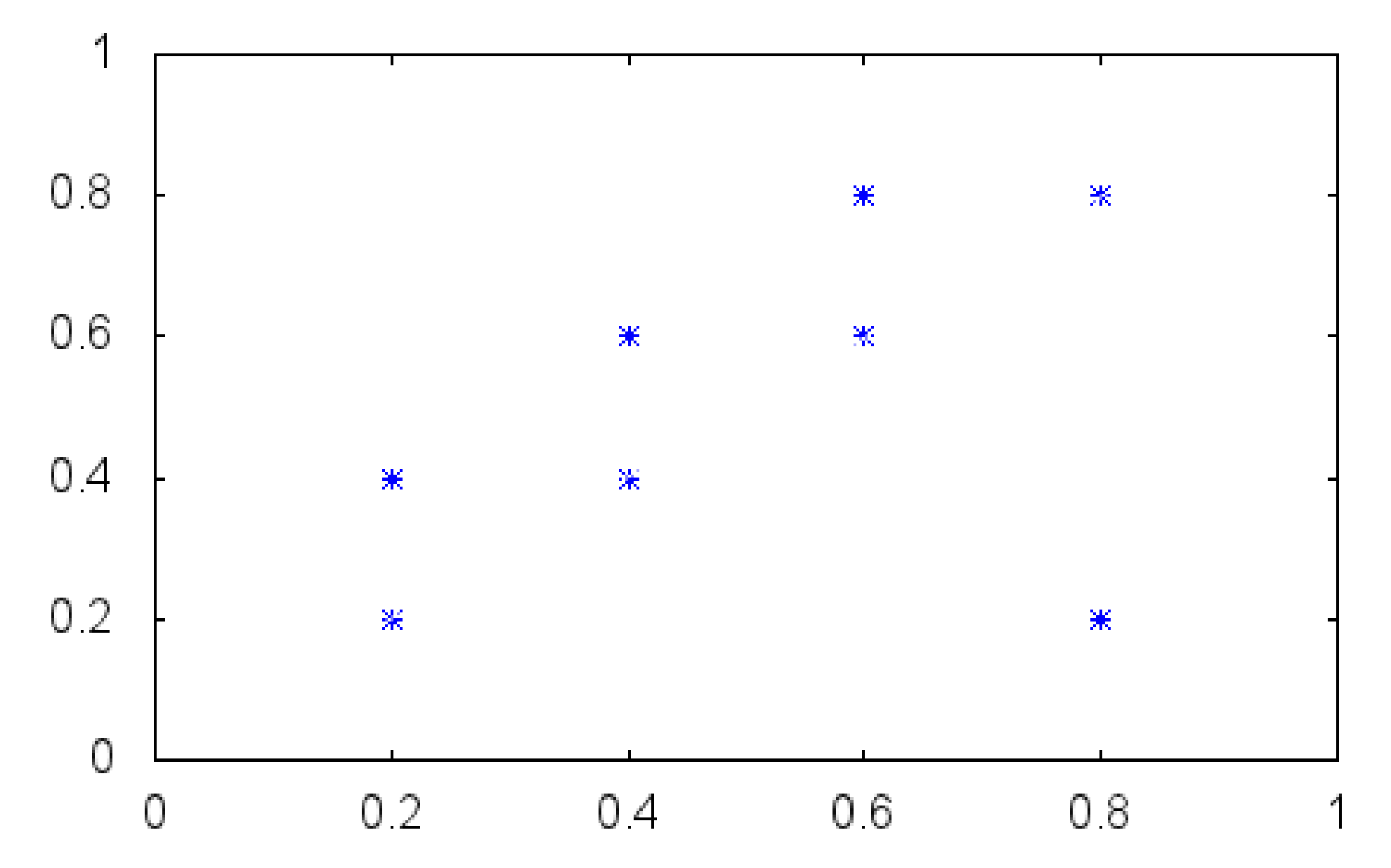

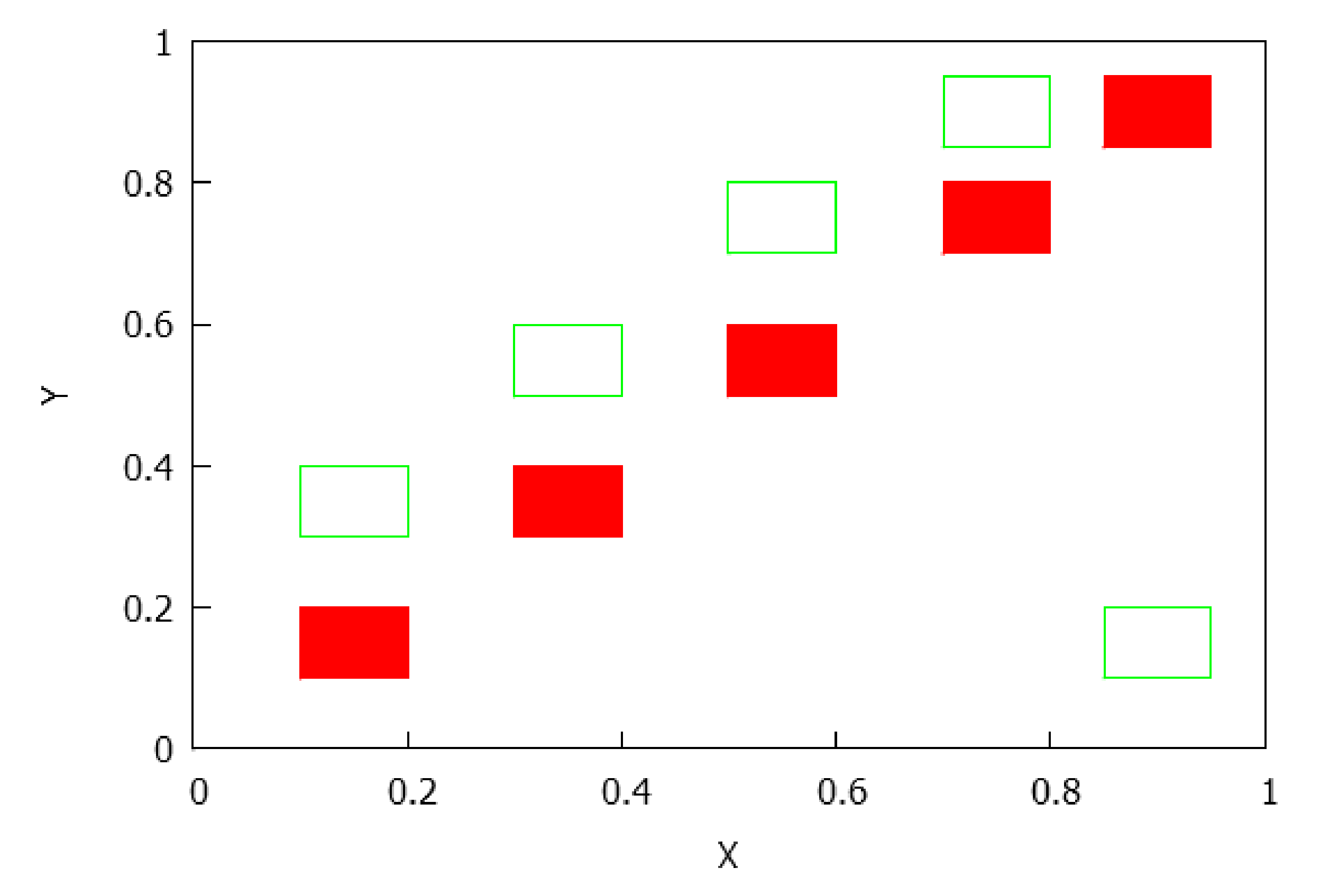


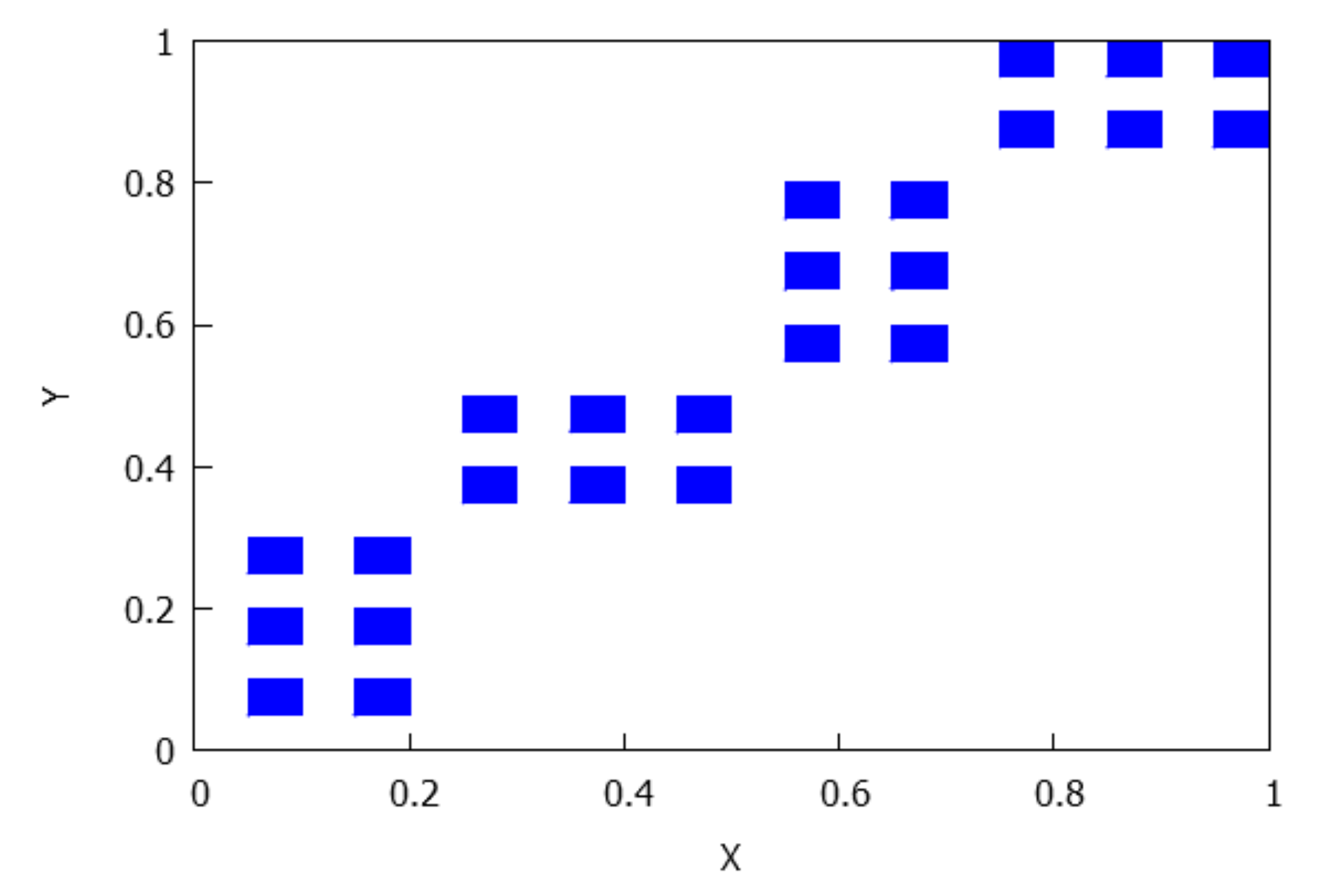
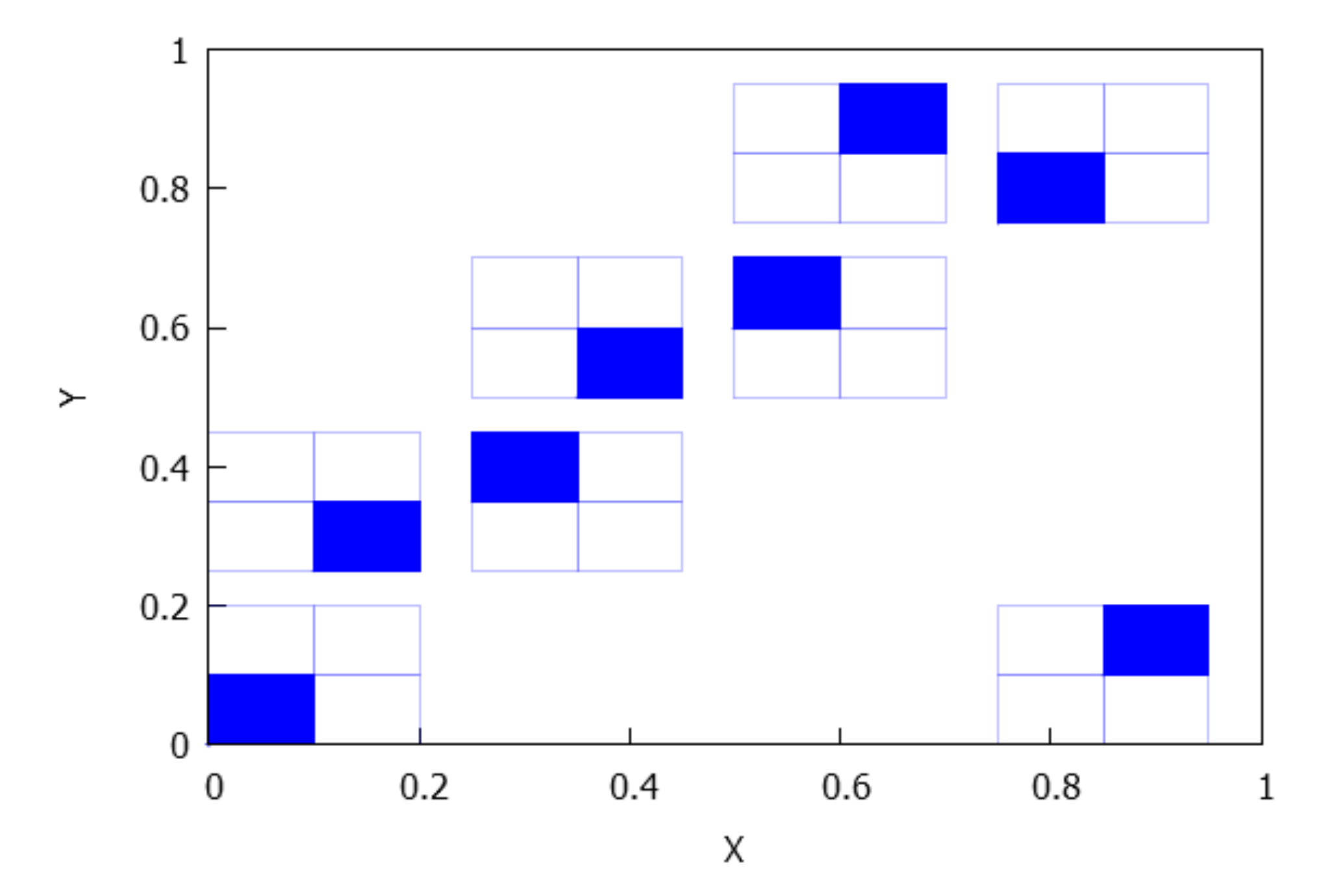
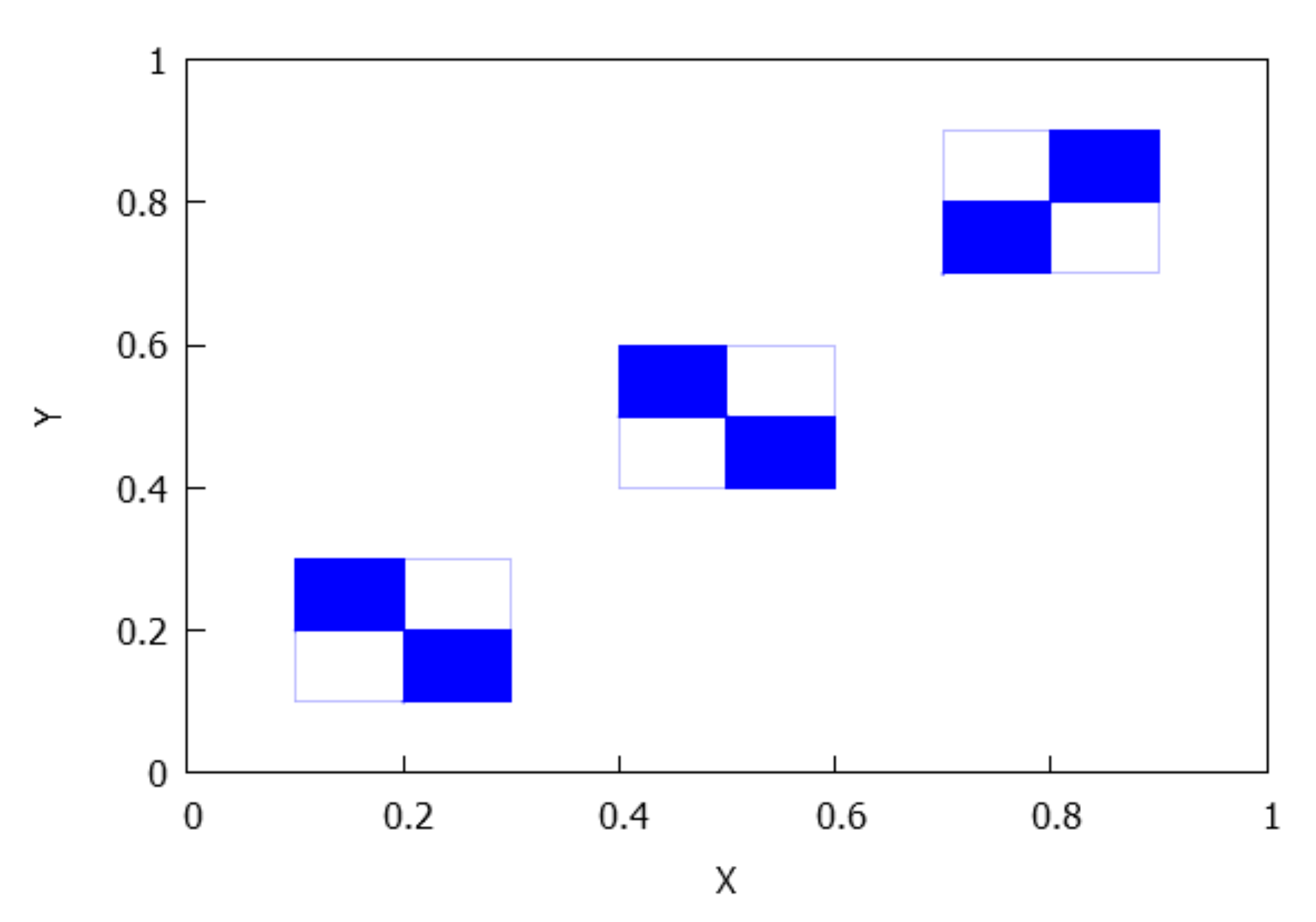
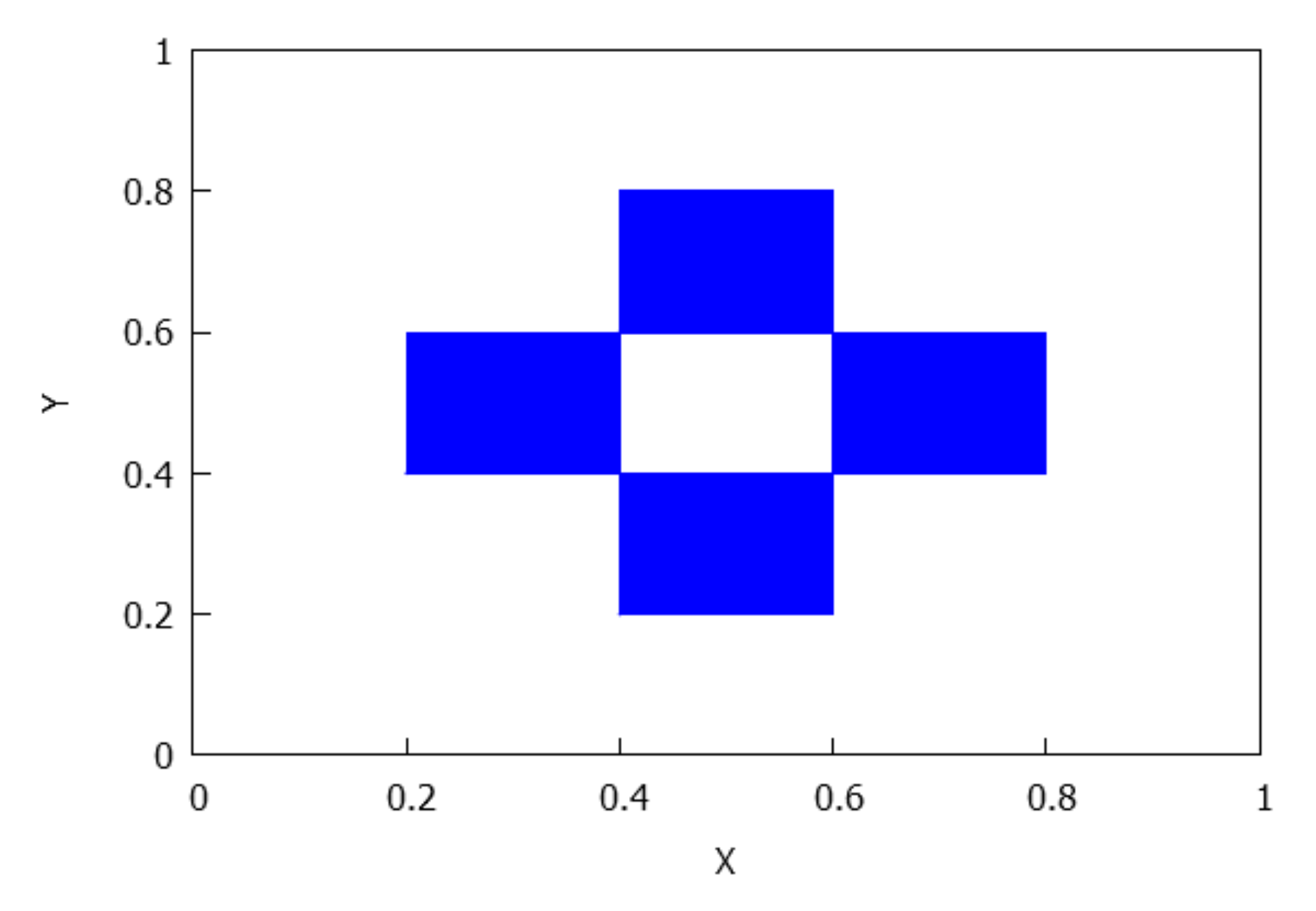
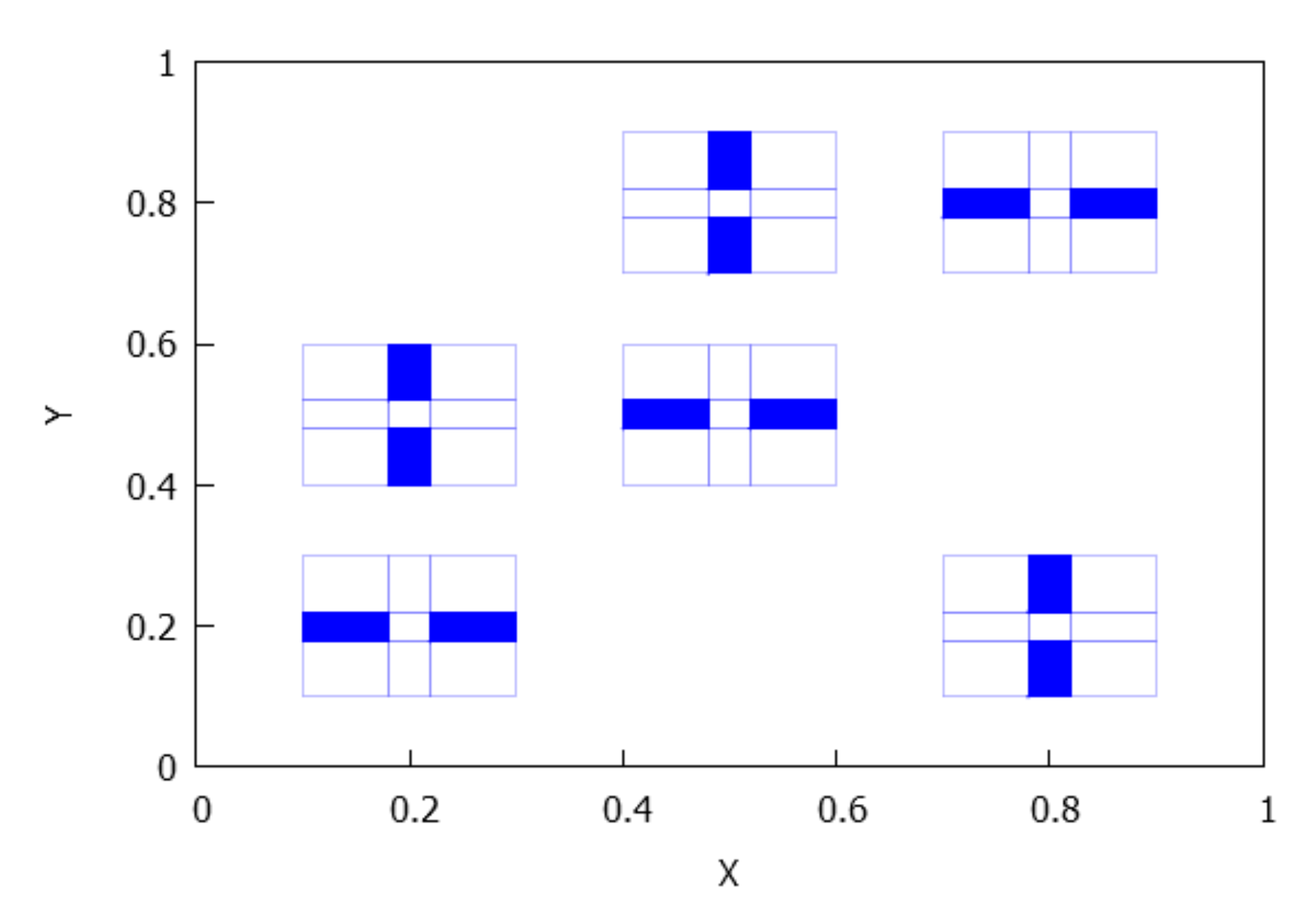
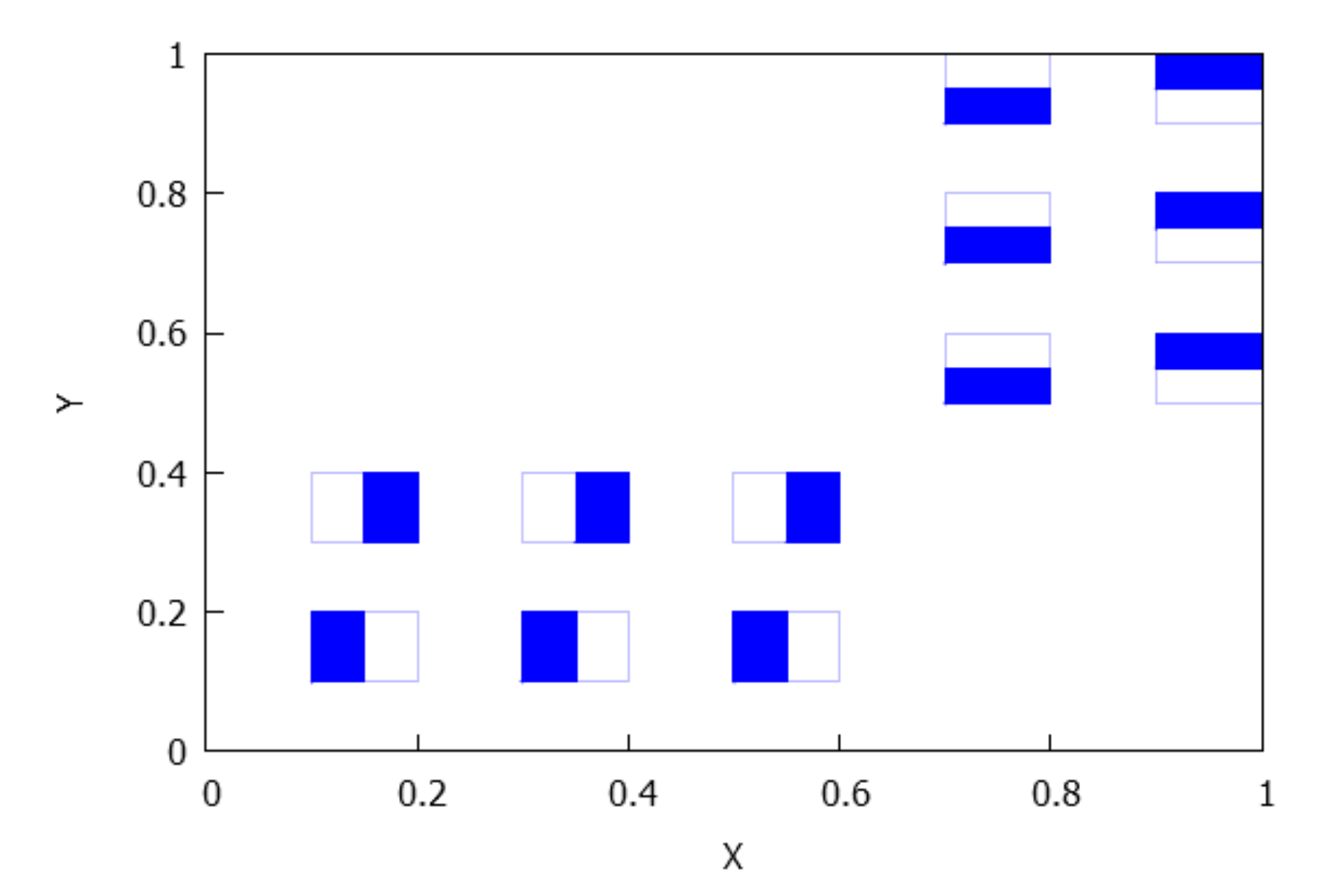

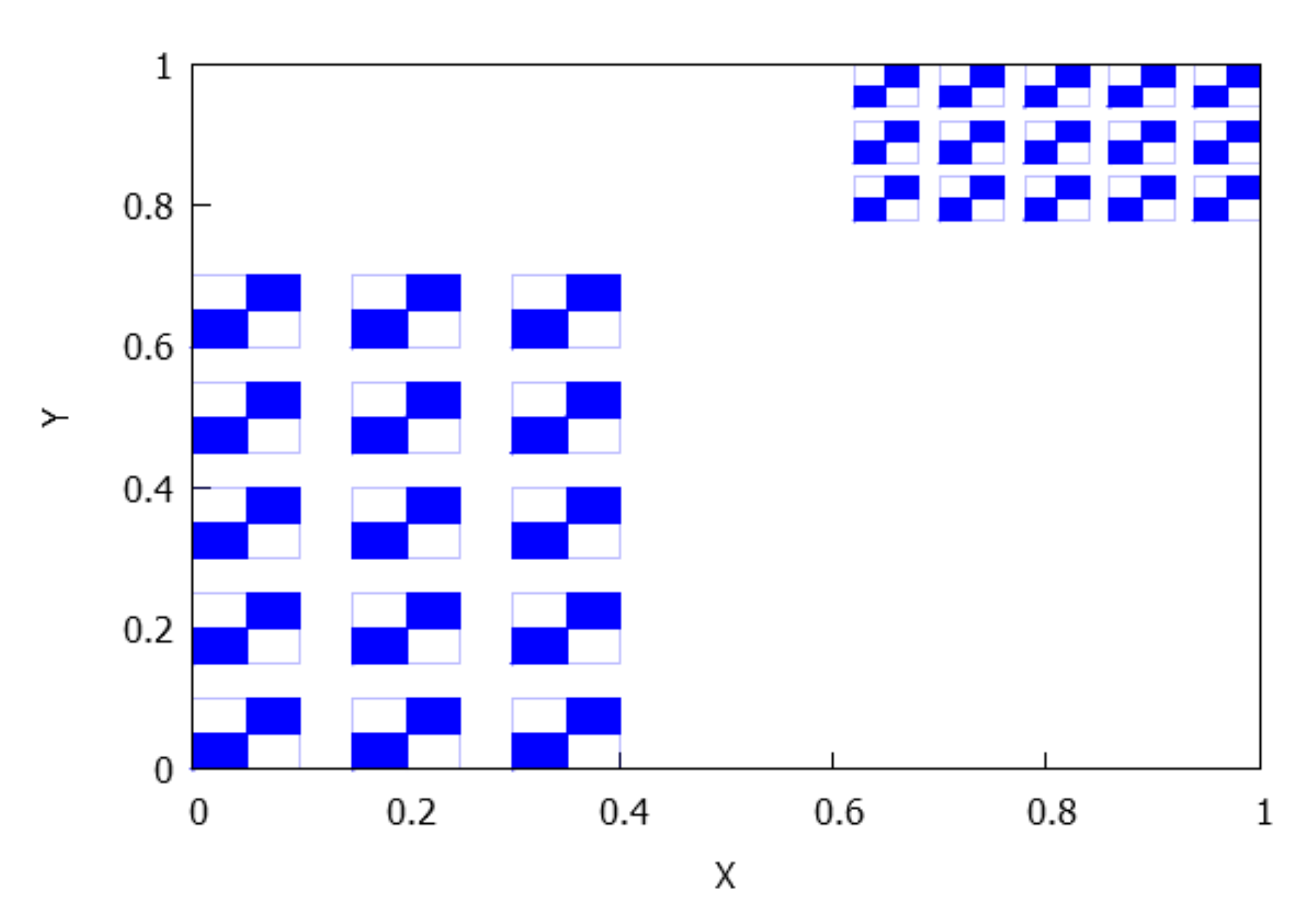
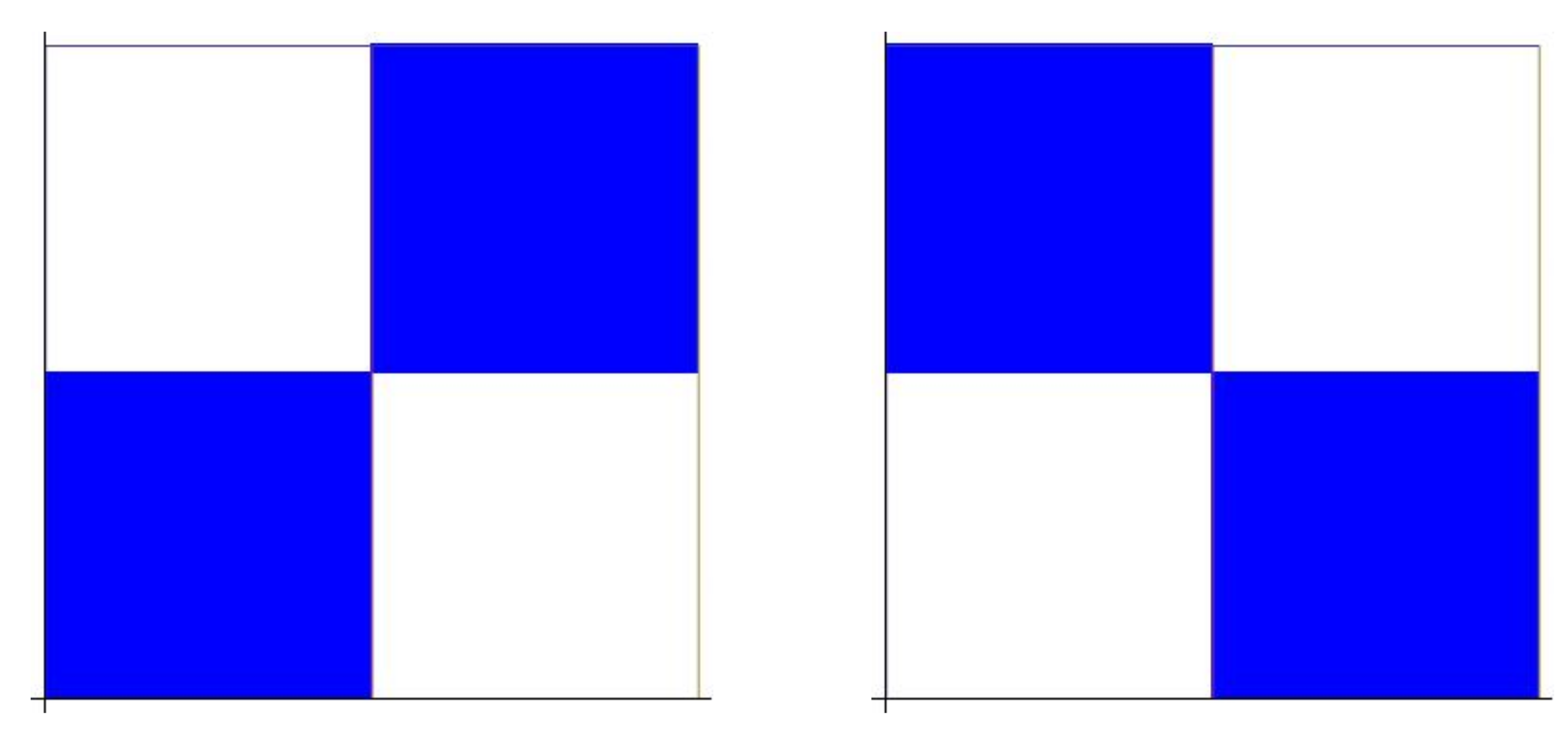
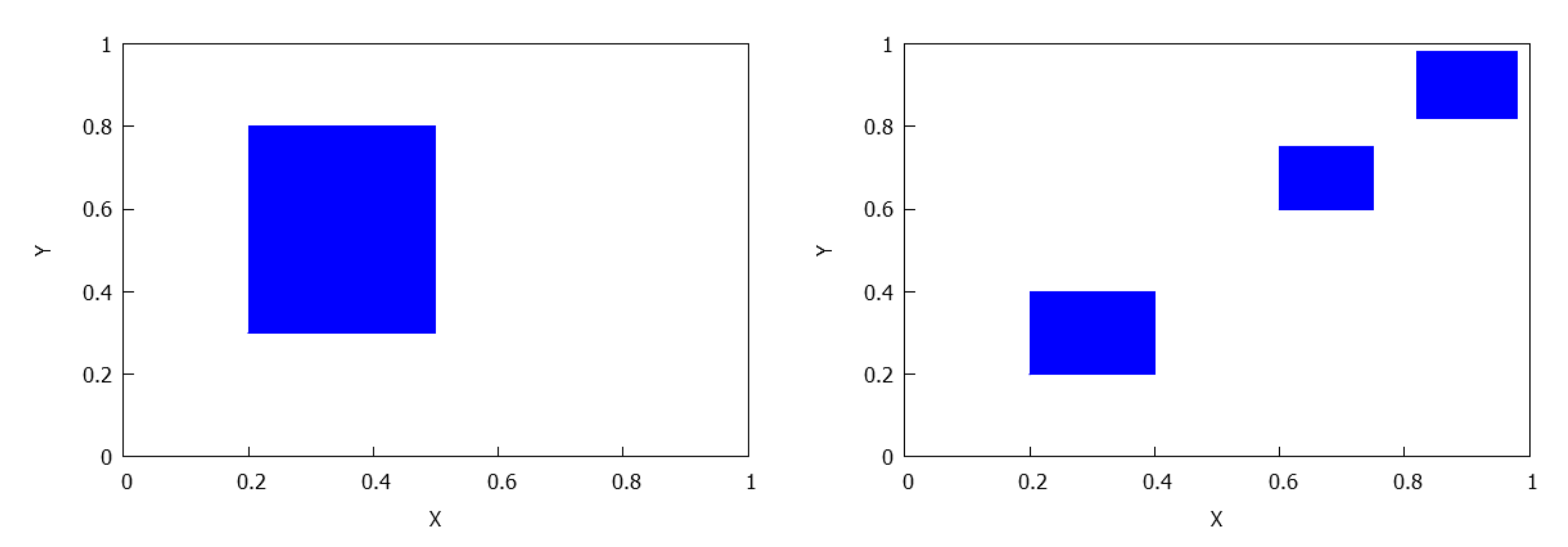
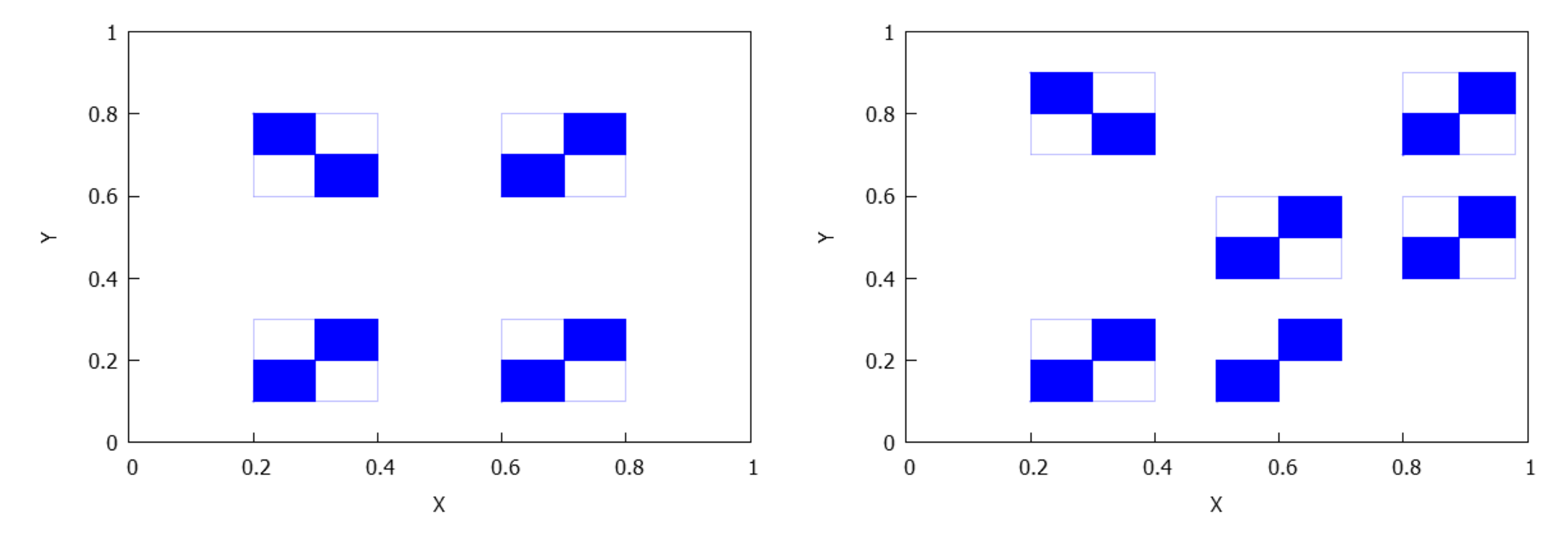


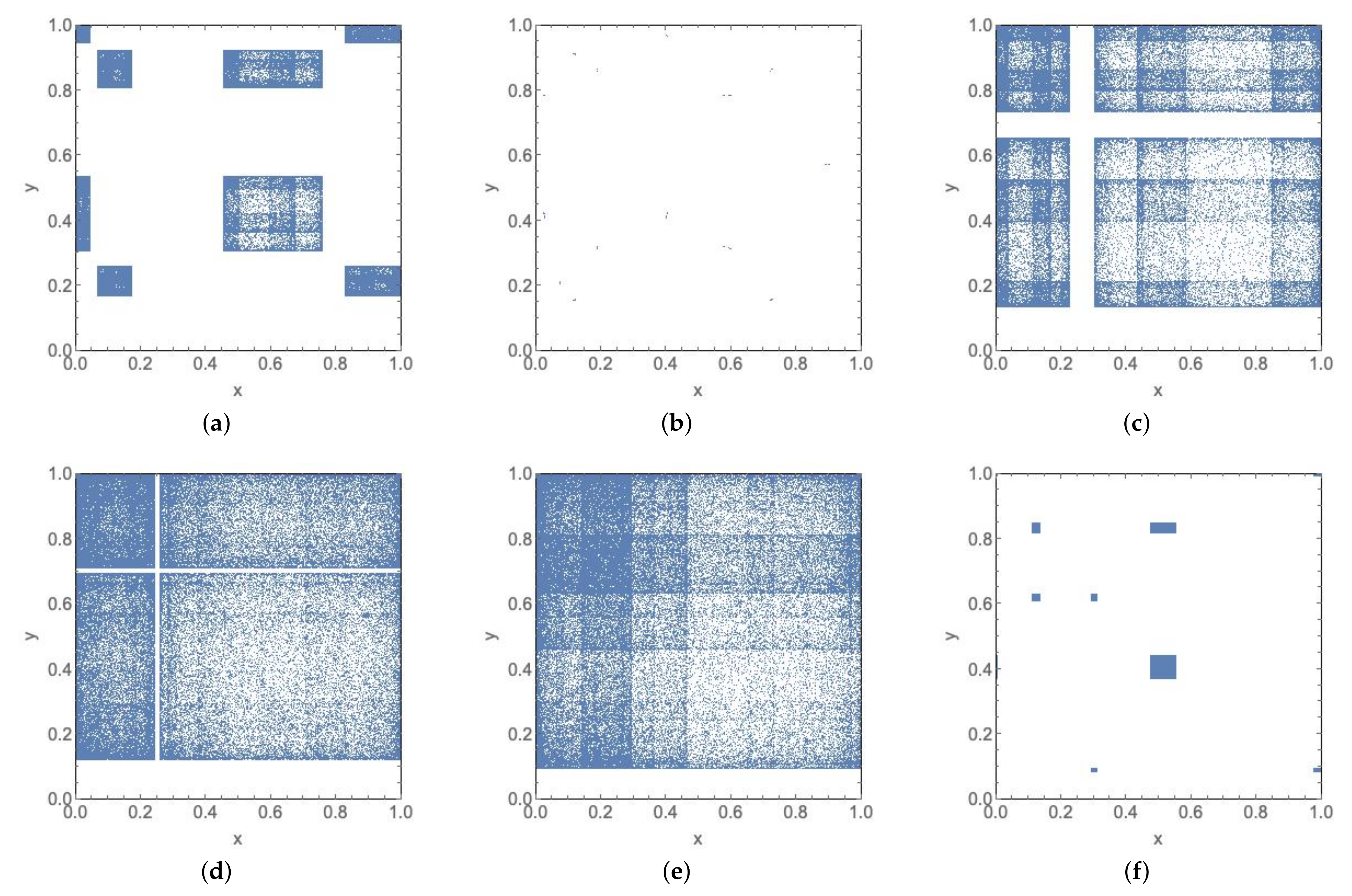



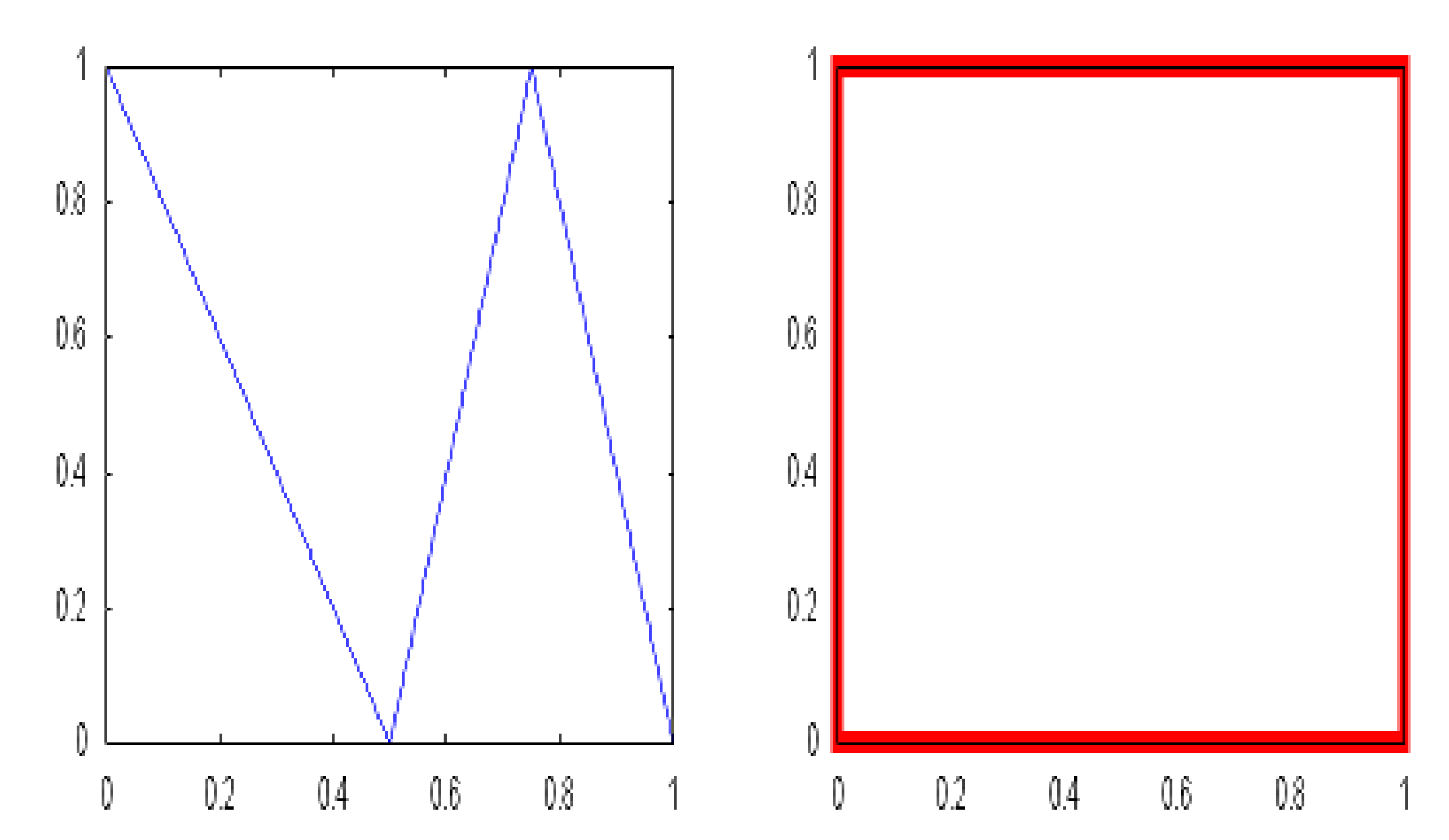

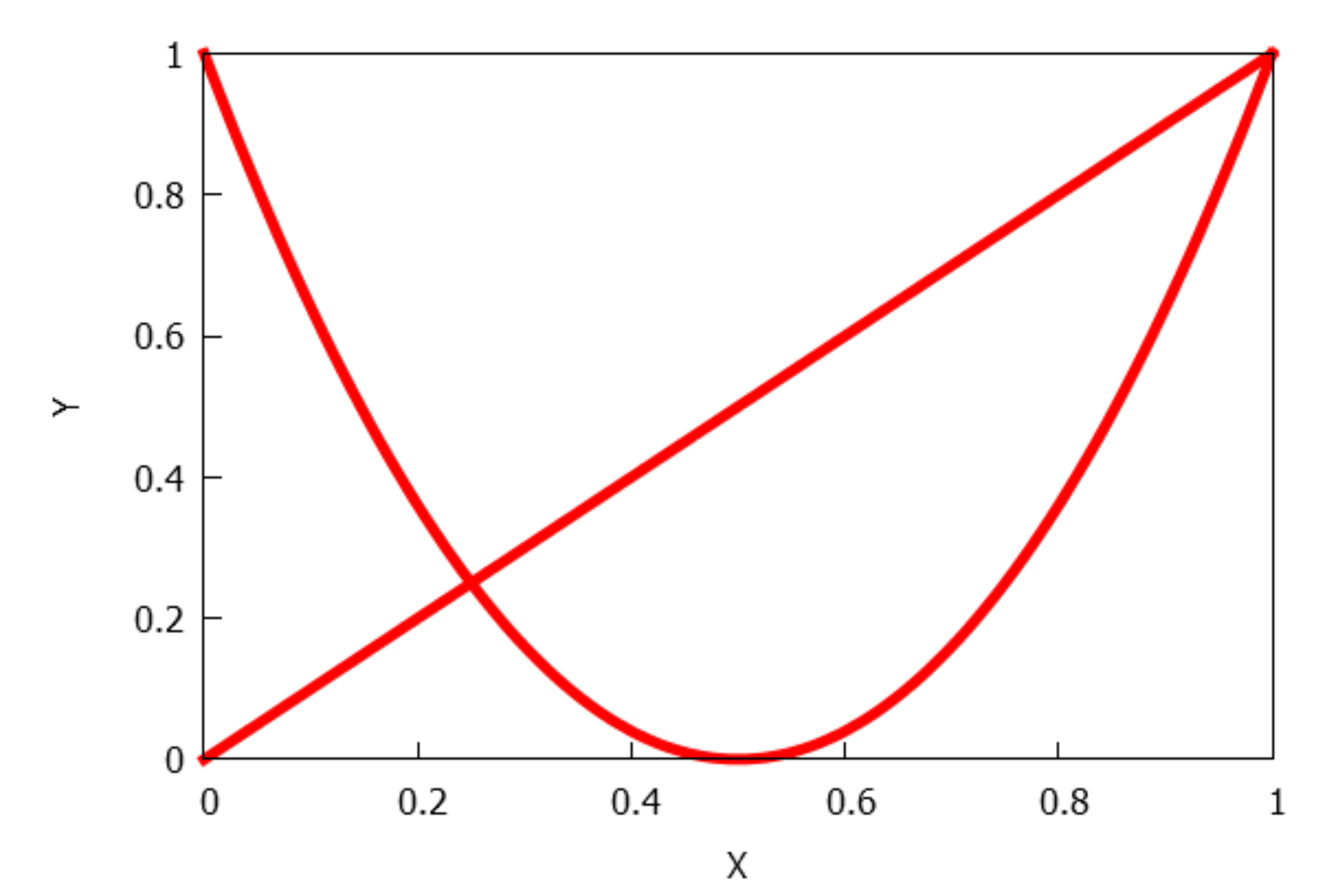

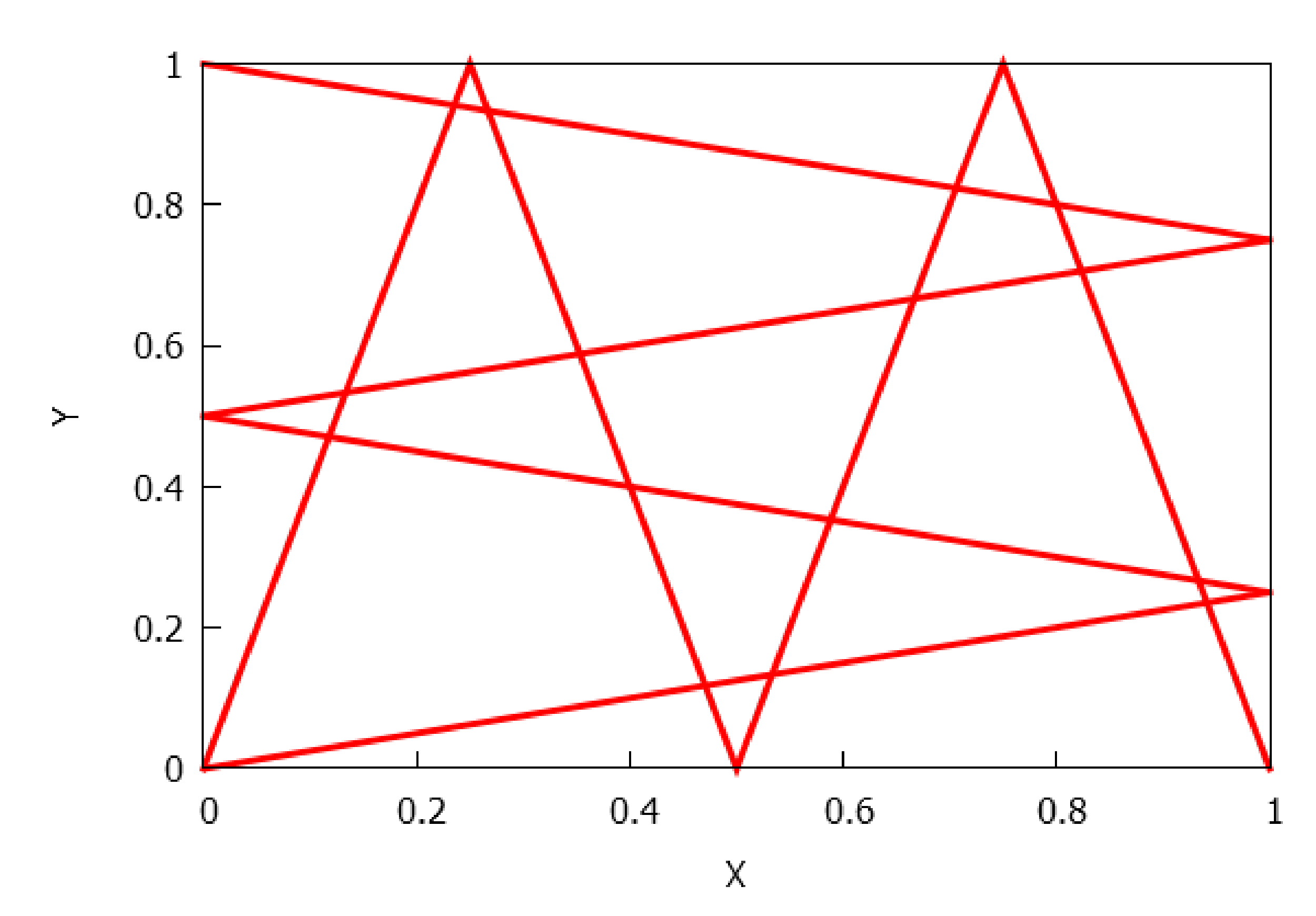
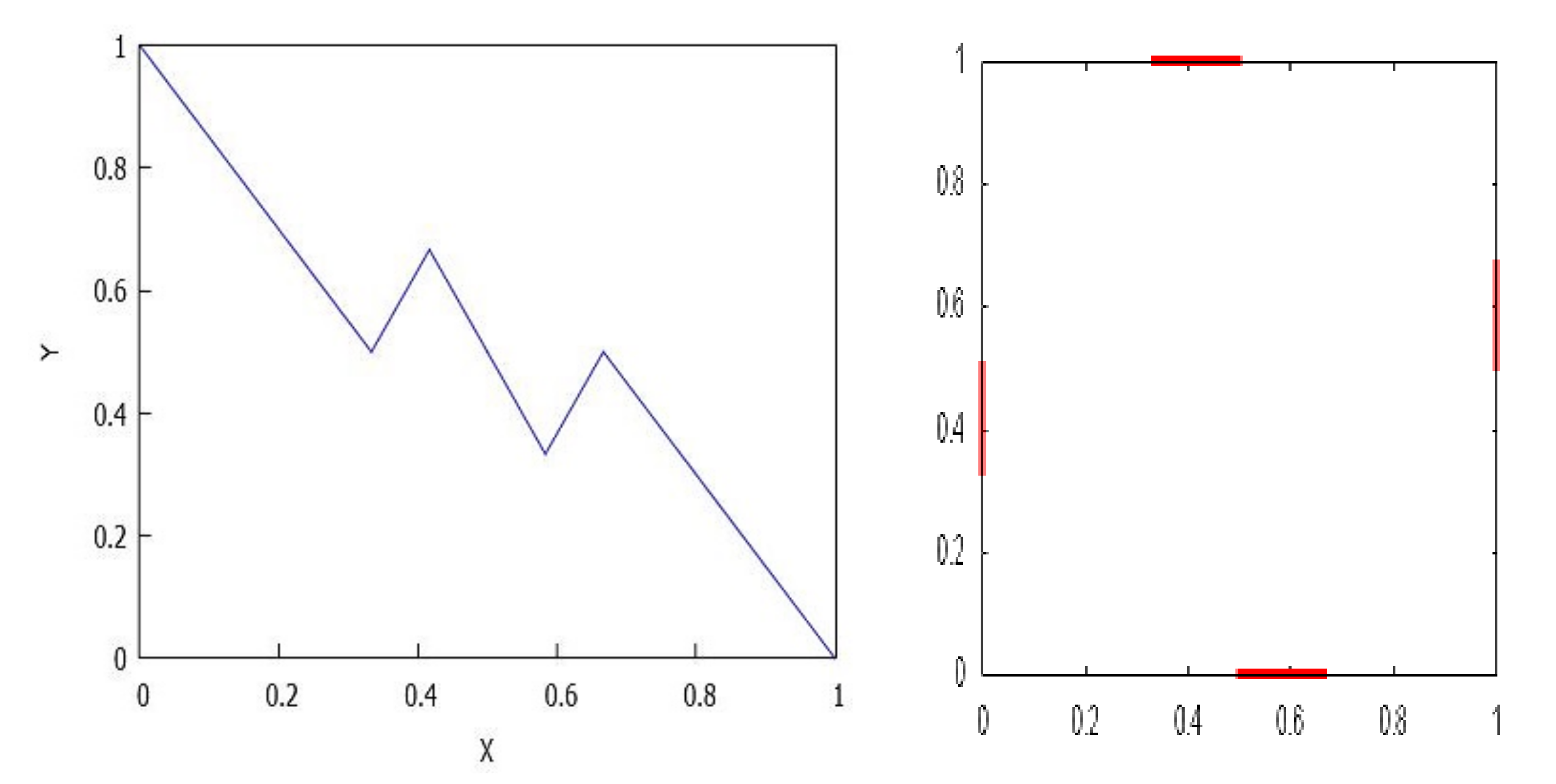


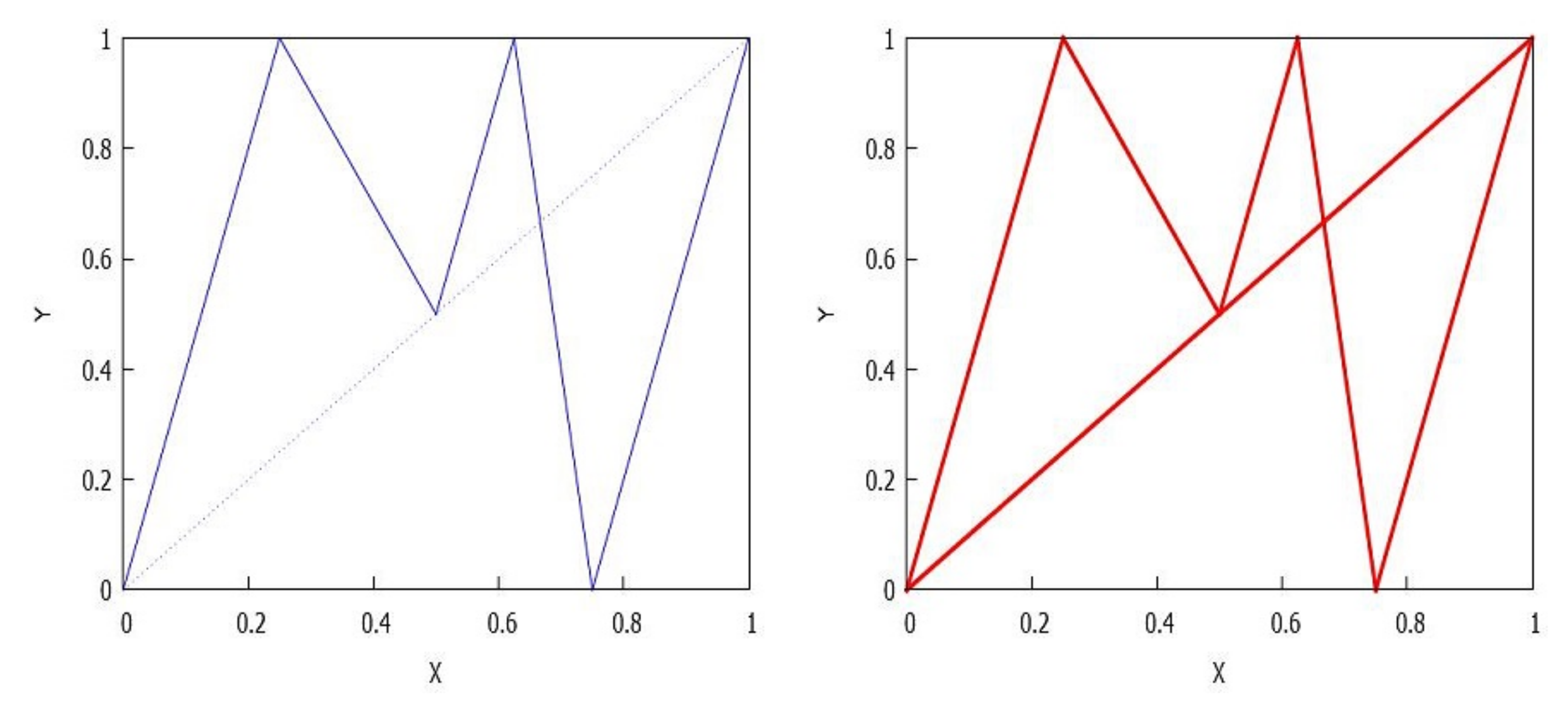
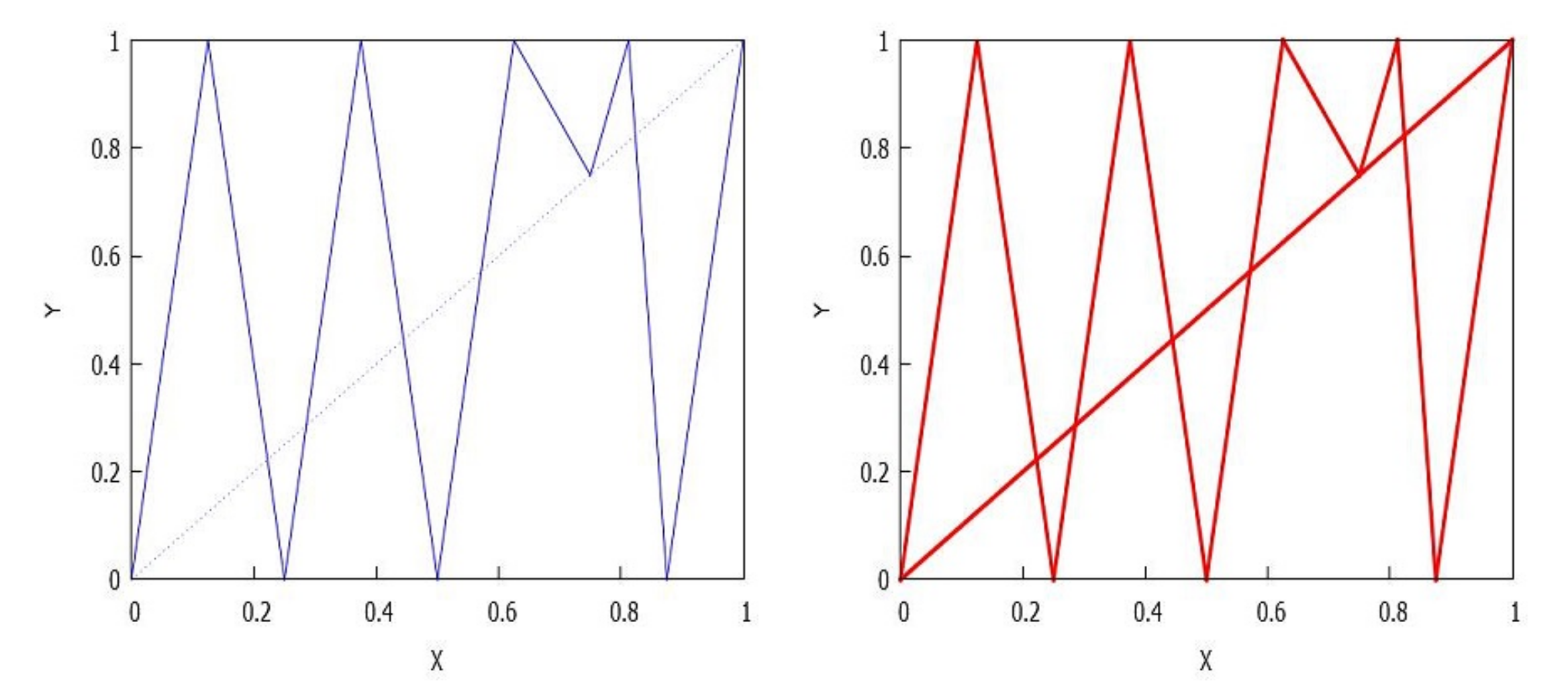
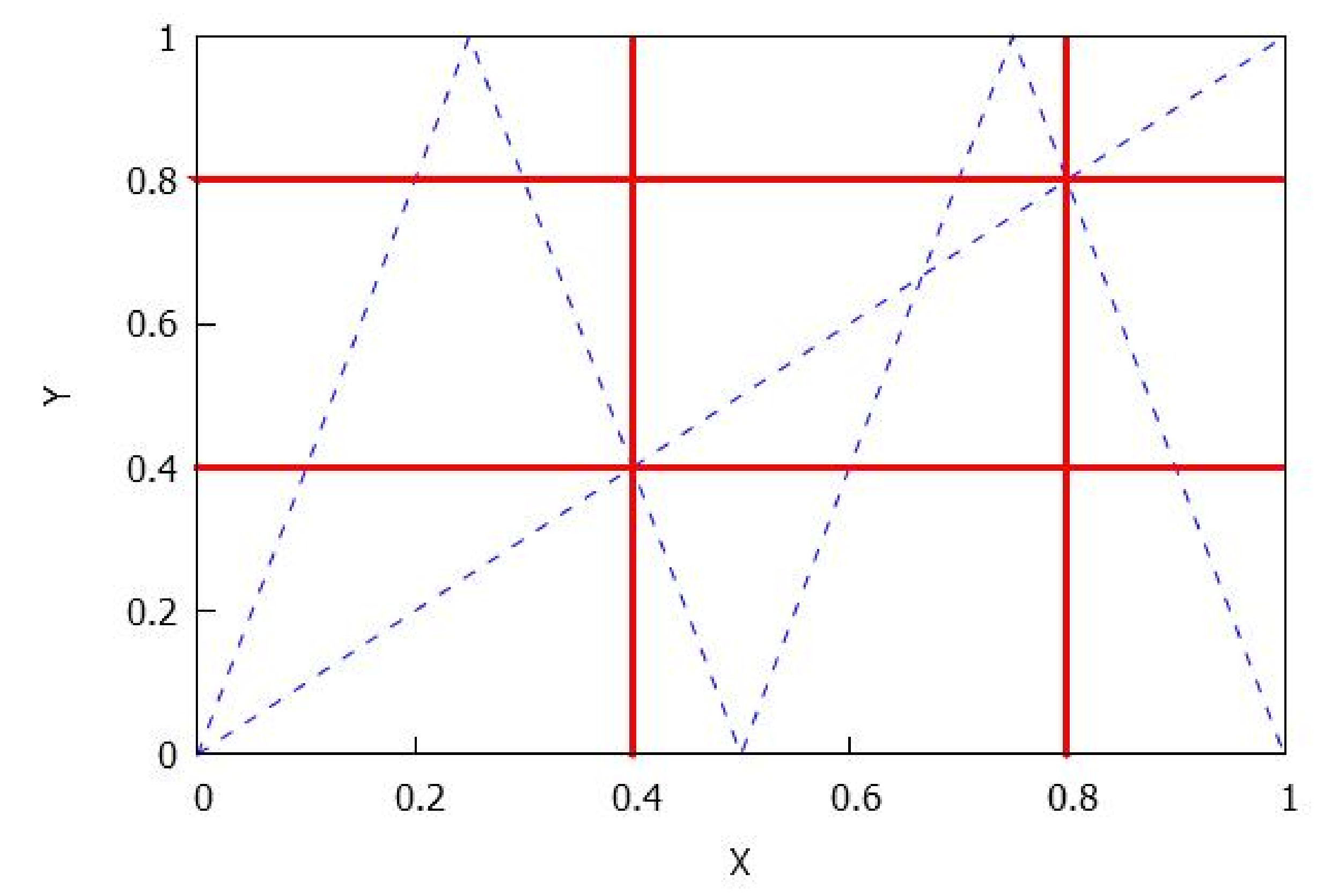
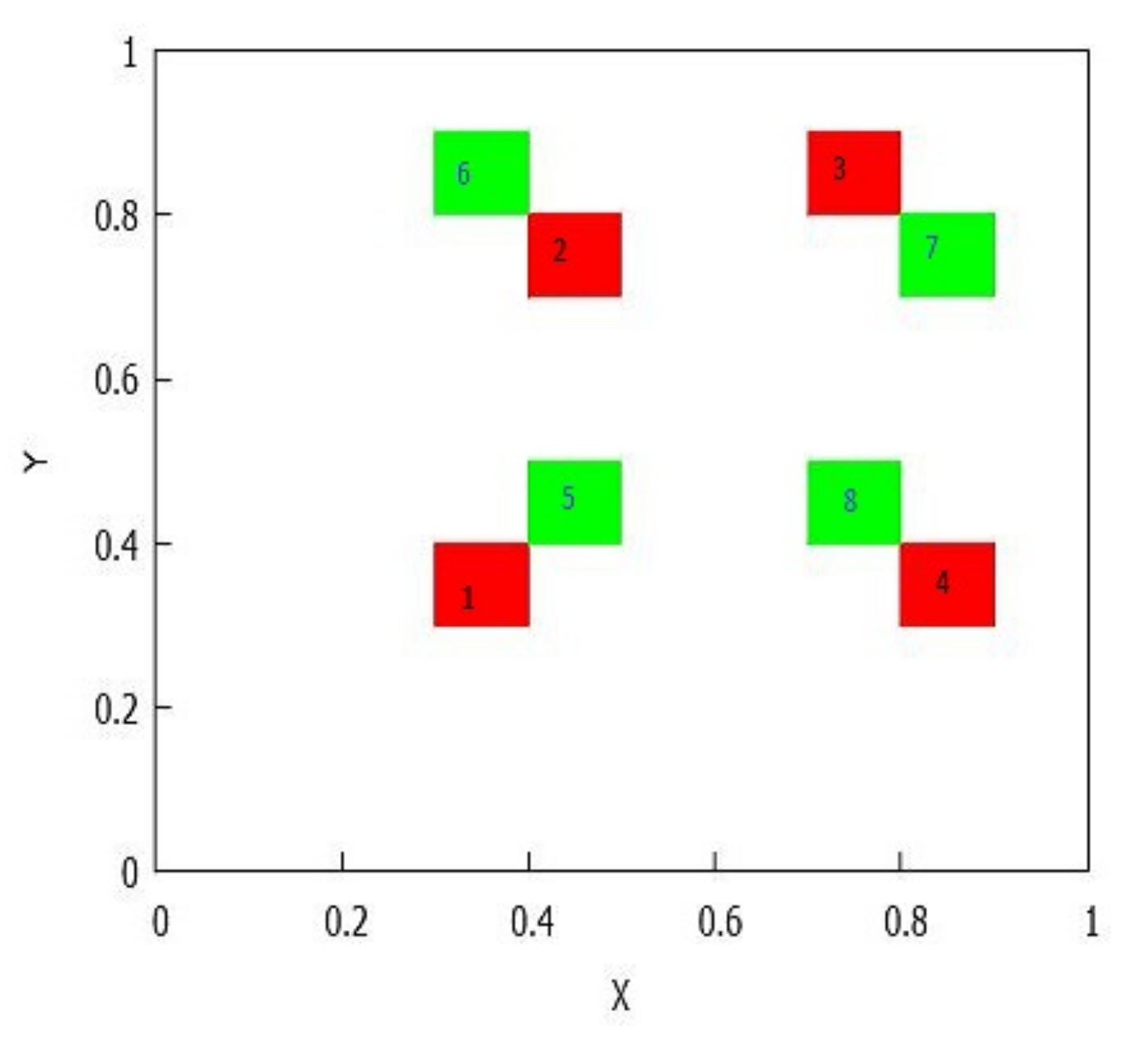
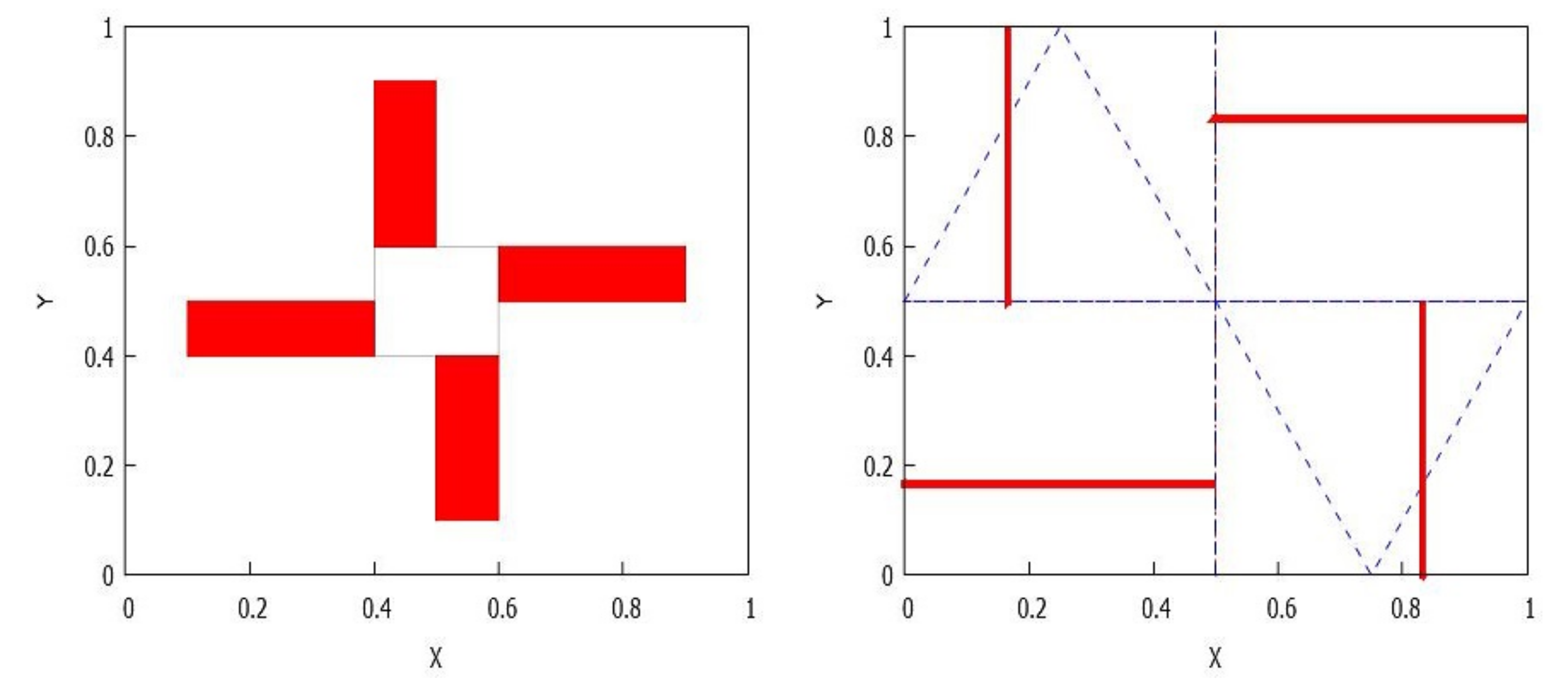
Publisher’s Note: MDPI stays neutral with regard to jurisdictional claims in published maps and institutional affiliations. |
© 2021 by the authors. Licensee MDPI, Basel, Switzerland. This article is an open access article distributed under the terms and conditions of the Creative Commons Attribution (CC BY) license (http://creativecommons.org/licenses/by/4.0/).
Share and Cite
Linero-Bas, A.; Muñoz-Guillermo, M. A Full Description of ω-Limit Sets of Cournot Maps Having Non-Empty Interior and Some Economic Applications. Mathematics 2021, 9, 452. https://doi.org/10.3390/math9040452
Linero-Bas A, Muñoz-Guillermo M. A Full Description of ω-Limit Sets of Cournot Maps Having Non-Empty Interior and Some Economic Applications. Mathematics. 2021; 9(4):452. https://doi.org/10.3390/math9040452
Chicago/Turabian StyleLinero-Bas, Antonio, and María Muñoz-Guillermo. 2021. "A Full Description of ω-Limit Sets of Cournot Maps Having Non-Empty Interior and Some Economic Applications" Mathematics 9, no. 4: 452. https://doi.org/10.3390/math9040452
APA StyleLinero-Bas, A., & Muñoz-Guillermo, M. (2021). A Full Description of ω-Limit Sets of Cournot Maps Having Non-Empty Interior and Some Economic Applications. Mathematics, 9(4), 452. https://doi.org/10.3390/math9040452





